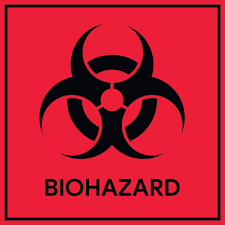As biohazard cleanup becomes increasingly crucial in ensuring public safety and environmental health, emerging technologies are revolutionizing the field.
Biohazard cleanup involves the removal, cleaning, and disinfection of biological threats to human health and the environment. From crime scenes to infectious disease outbreaks, the importance of efficient and safe biohazard cleanup cannot be overstated. With technological advancements, new methods are emerging that enhance effectiveness, safety, and efficiency.
Understanding
Biohazard cleanup, also known as biohazard remediation, encompasses the safe removal and disinfection of biological contaminants. These can include blood, bodily fluids, infectious diseases, and hazardous materials. The process requires specialized training, equipment, and adherence to strict regulatory guidelines to ensure safety. Services.
Emerging Technologies
UV light disinfection is an emerging technology that uses ultraviolet light to kill or inactivate microorganisms by destroying their DNA. This method is particularly effective in sterilizing surfaces and air in contaminated areas. UV light devices can be used in various settings, including hospitals, laboratories, and crime scenes.
Electrostatic Spraying Systems
Electrostatic spraying systems are revolutionizing the application of disinfectants. These systems charge liquid disinfectants as they pass through a sprayer nozzle, creating a fine mist that adheres evenly to surfaces. This ensures comprehensive coverage and effective disinfection, making it ideal for large areas and complex surfaces.
Ozone Generators
Ozone generators produce ozone gas, which is a powerful oxidizing agent that can destroy bacteria, viruses, and odors. These devices are used to sanitize air and surfaces in biohazard cleanup sites. Ozone is particularly useful for its ability to penetrate difficult-to-reach areas, ensuring thorough decontamination.
Hydrogen Peroxide Vapor (HPV) Systems
HPV systems utilize vaporized hydrogen peroxide to sterilize environments. This technology is highly effective against a broad spectrum of pathogens and is used in healthcare settings, laboratories, and other areas requiring high-level disinfection. HPV systems are valued for their ability to decontaminate entire rooms and equipment.
Robotic Cleanup Technologies
Robotic technologies are making significant strides in biohazard cleanup. Robots equipped with advanced sensors and disinfectant spraying systems can navigate contaminated areas, reducing human exposure to biohazards. These robots can perform tasks such as surface cleaning, air purification, and waste removal autonomously.
Advanced Personal Protective Equipment (PPE)
The development of advanced PPE is crucial in protecting biohazard cleanup professionals. Innovations include lightweight, breathable suits with integrated cooling systems and enhanced filtration masks. These advancements improve comfort and safety, allowing workers to operate more efficiently in hazardous environments.
Benefits of Emerging Biohazard Cleanup Technologies
Emerging technologies significantly enhance safety for biohazard cleanup professionals by reducing direct exposure to contaminants. Automated systems and advanced PPE protect workers from harmful biological agents, minimizing health risks.
Improved Efficiency
Technological innovations streamline biohazard cleanup processes, making them faster and more efficient. Automated systems and advanced disinfection methods reduce the time and labor required to decontaminate areas, allowing for quicker restoration of safe environments.
Thorough Decontamination
New technologies ensure more thorough decontamination by reaching areas that traditional methods might miss. Electrostatic sprayers and ozone generators, for instance, provide comprehensive coverage, ensuring that all surfaces and air are effectively disinfected.
Cost-Effective Solutions
While some emerging technologies require significant initial investment, they often prove cost-effective in the long run. Improved efficiency and reduced labor costs, combined with the prevention of contamination spread, result in overall savings for biohazard cleanup operations.
The field of biohazard cleanup is evolving rapidly, with emerging technologies offering significant improvements in safety, efficiency, and effectiveness. From UV light disinfection to advanced robotics, these innovations are transforming the way biological threats are managed. As technology continues to advance, the future of biohazard cleanup looks promising, with new solutions poised to address the challenges and complexities of this critical field.

